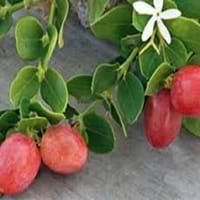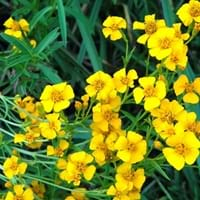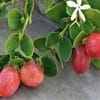Life Span
Perennial
Annual
Type
Fruit
Flowering Plants, Shrubs
Origin
Central Asia, Southern Asia, Western Ghats, India
Mexico, Central America
Types
congesta, paucinervia
African or American Marigolds, French Marigolds, Mule Marigolds
Habitat
Fertile bottom land, moist forests, Temperate Regions, Tropical Forests
Roadsides, wastelands
USDA Hardiness Zone
Not Available
9-11
Sunset Zone
Not Available
A1, A2, A3, H1, H2, 1a, 1b, 2a, 2b, 3a, 3b, 4, 5, 6, 7, 8, 9, 10, 11, 12, 13, 14, 15, 16, 17, 18, 19, 20, 21, 22, 23, 24
Habit
Upright/Erect
Upright/Erect
Flower Color
Pale White, White
Yellow, Orange, Gold, Ivory
Flower Color Modifier
Bicolor
Bicolor
Fruit Color
Purple, Black
Not Available
Leaf Color in Spring
Green
Dark Green
Leaf Color in Summer
Green
Dark Green
Leaf Color in Fall
Green
Dark Green
Leaf Color in Winter
Light Green
Light Green
Plant Season
Spring, Summer, Fall
Summer, Fall
Sunlight
Full Sun, Partial Sun, Partial shade
Full Sun
Growth Rate
Medium
Very Fast
Type of Soil
Loam
Clay, Loam, Sand
The pH of Soil
Acidic, Neutral, Alkaline
Neutral, Alkaline
Soil Drainage
Well drained
Well drained
Bloom Time
Spring
Indeterminate
Tolerances
Drought
Drought
Where to Plant?
Ground
Container, Ground, Pot
How to Plant?
Seedlings, Stem Cutting
Seedlings
Plant Maintenance
Medium
Medium
Watering Requirements
Keep the ground moist but not water-logged
Allow to dry out slightly between watering
In Summer
Lots of watering
Lots of watering
In Spring
Moderate
Moderate
In Winter
Average Water
Average Water
Soil pH
Acidic, Neutral, Alkaline
Alkaline, Neutral
Soil Type
Loam
Clay, Loam, Sand
Soil Drainage Capacity
Well drained
Well drained
Sun Exposure
Full Sun, Partial Sun, Partial shade
Full Sun
Pruning
Prune if you want to improve plant shape, Remove dead leaves
Prune ocassionally, Remove dead or diseased plant parts, Requires little pruning
Fertilizers
Compost, fertilize in growing season
All-Purpose Liquid Fertilizer
Pests and Diseases
Aphids, Earwigs, Insects, Mildew, Red blotch, Rust, sawflies
Alternaria Leaf Spot, Bacterial leaf spot, Damping-off, Gray mold, Powdery mildew, Root rot
Plant Tolerance
Dry soil, Heat And Humidity
Drought
Flowers
Insignificant
Showy
Flower Petal Number
Single
Single, Double, Semi-Double
Fragrant Bark/Stem
No
Yes
Foliage Texture
Medium
Coarse
Foliage Sheen
Matte
Matte
Attracts
Birds, Butterflies, Fruit Bats
Butterflies
Allergy
Eczema, Mouth itching, Throat itching
Not Available
Aesthetic Uses
Not Available
Showy Purposes
Beauty Benefits
good for lips, Remove blemishes
Not Available
Environmental Uses
Air purification, Food for animals, Food for birds, soil stabilisation
Air purification
Medicinal Uses
Anemia, Diuretic, Potassium, Rich in Iron, Vitamin C
Burns, constipation, Inflammation, Upset stomach, Wounds
Part of Plant Used
Fruits, Leaves
Flowers, Seeds
Other Uses
Added to salads, Cosmetics, Culinary use, Used as a nutritious food item, Used As Food, Used for its medicinal properties
Can be made into a herbal tea, Decoration Purposes, Used As Food
Used As Indoor Plant
No
Yes
Used As Outdoor Plant
Yes
Yes
Garden Design
Edible, Fruit / Fruit Tree, Hedges
Flower borders
Botanical Name
Carissa carandas
Tagetes lucida
Common Name
Black Currant
sweetscented marigold, Mexican marigold
In Hindi
करोंदा, कालि मैना
sweetscented marigold
In German
Carandas
süß duftend Ringelblume
In French
karondas
Yauhtli
In Spanish
karondas
pericón, Santa María, yerbanís
In Greek
karondas
γλυκό άρωμα κατιφέ
In Portuguese
karondas
Tarragon Mexicano
In Polish
karondas
słodkie pachnące nagietka
In Latin
karondas
sweetscented marigold
Phylum
Magnoliophyta
Tracheophyta
Class
Magnoliopsida
Magnoliopsida
Order
Gentianales
Asterales
Family
Apocynaceae
Asteraceae
Clade
Angiosperms, Asterids, Eudicots
Not Available
Tribe
Not Available
Not Available
Subfamily
Not Available
Not Available
Number of Species
Not Available
Season and Care of Karonda and Sweetscented Marigold
Season and care of Karonda and Sweetscented Marigold is important to know. While considering everything about Karonda and Sweetscented Marigold Care, growing season is an essential factor. Karonda season is Spring, Summer and Fall and Sweetscented Marigold season is Spring, Summer and Fall. The type of soil for Karonda is Loam and for Sweetscented Marigold is Clay, Loam, Sand while the PH of soil for Karonda is Acidic, Neutral, Alkaline and for Sweetscented Marigold is Neutral, Alkaline.
Karonda and Sweetscented Marigold Physical Information
Karonda and Sweetscented Marigold physical information is very important for comparison. Karonda height is 120.00 cm and width 120.00 cm whereas Sweetscented Marigold height is 60.00 cm and width 50.00 cm. The color specification of Karonda and Sweetscented Marigold are as follows:
Karonda flower color: Pale White and White
Karonda leaf color: Green
Sweetscented Marigold flower color: Yellow, Orange, Gold and Ivory
- Sweetscented Marigold leaf color: Dark Green
Care of Karonda and Sweetscented Marigold
Care of Karonda and Sweetscented Marigold include pruning, fertilizers, watering etc. Karonda pruning is done Prune if you want to improve plant shape and Remove dead leaves and Sweetscented Marigold pruning is done Prune ocassionally, Remove dead or diseased plant parts and Requires little pruning. In summer Karonda needs Lots of watering and in winter, it needs Average Water. Whereas, in summer Sweetscented Marigold needs Lots of watering and in winter, it needs Average Water.





